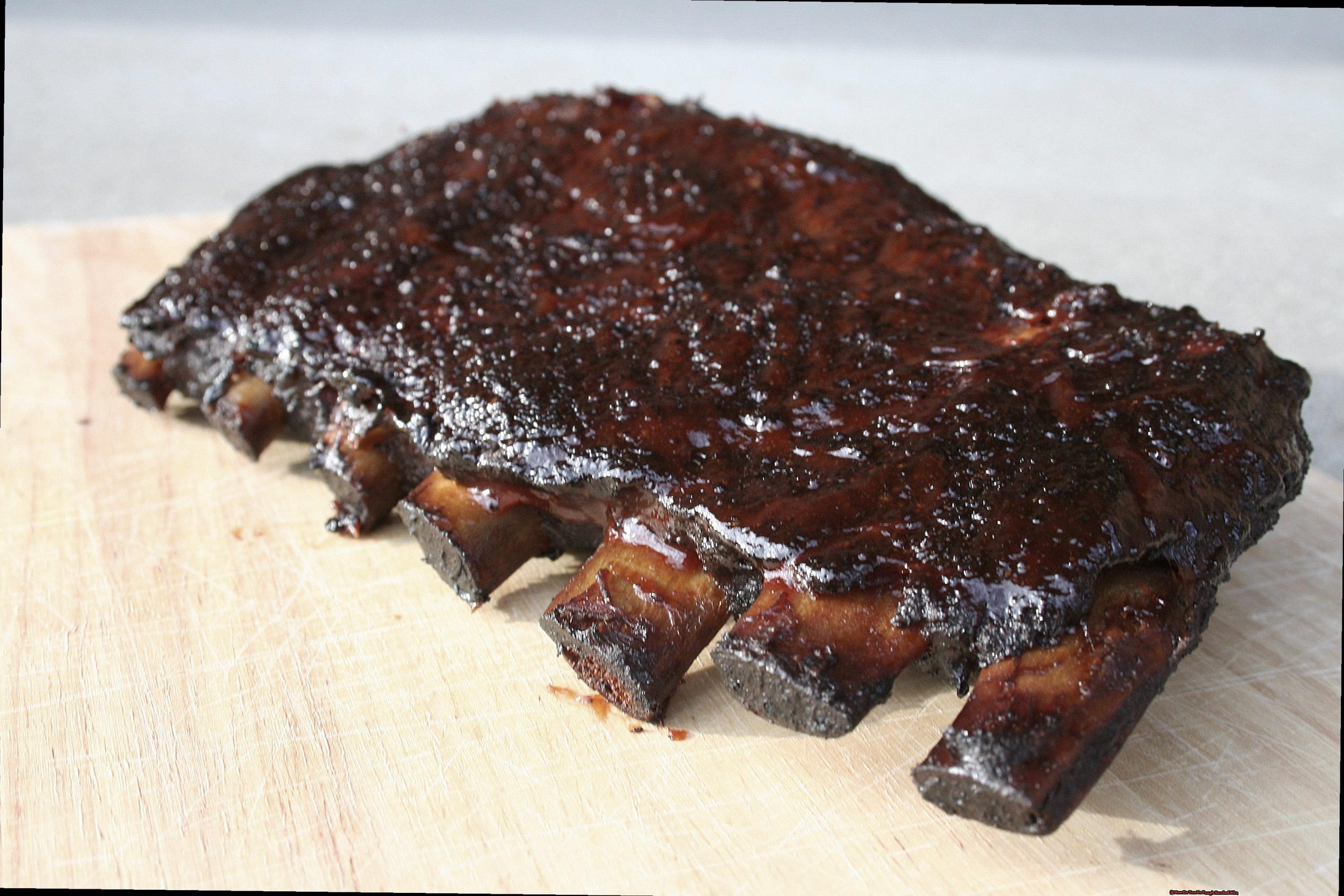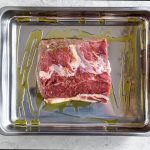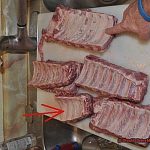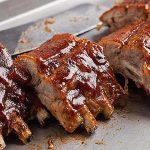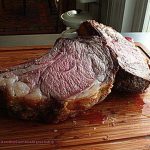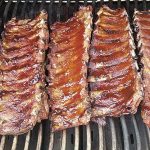Are your smoked ribs falling flat? Are you craving that perfect balance of juicy and tender meat with a burst of flavor in every bite? Well, look no further because we have the ultimate guide for fixing tough smoked ribs. Say goodbye to boring barbeque and hello to mouthwatering, fall-off-the-bone ribs that will have your friends and family begging for more.
In this blog post, we will cover everything from selecting the best cut of meat to mastering the art of smoking. Get ready to elevate your grilling game with these tried and tested tips:
- Discover the different types of ribs and which one is ideal for smoking.
- Uncover the secret to creating a flavorful dry rub that will take your ribs to the next level.
- Learn how long to marinate your ribs for maximum flavor infusion.
- Master the art of setting up and maintaining a smoker like a pro.
- Get insider tips on achieving perfectly tender and juicy ribs every time you fire up that grill.
Whether you’re an experienced pitmaster or a novice griller, this blog post has something for everyone. So put on your apron and get ready to impress with these irresistible smoked rib recipes. Let’s fire up that grill and dive into a world of smoky, succulent goodness.
Contents
- 1 The Importance of Properly Cooked Ribs
- 2 Common Mistakes in Smoking Ribs
- 3 How to Determine Doneness of Ribs
- 3.1 To avoid dry and tough ribs, it is crucial to cook them to proper doneness, wrap them, use a water pan, and spritz when necessary. Wrapping the ribs helps preserve moisture and heat, resulting in tender and fall-off-the-bone goodness. Ribs should reach an internal temperature of 200°
- 3.2 205° Fahrenheit for that perfect fall-off-the-bone tenderness.
- 4 Solutions for Tough and Dry Ribs
- 5 The Benefits of Wrapping Ribs During Cooking
- 6 Tips for Using a Water Pan to Keep Ribs Moist
- 7 The Art of Spritzing: Adding Moisture and Flavor to Ribs
- 8 Achieving Fall-Off-The-Bone Tenderness in Smoked Ribs
- 9 Conclusion
The Importance of Properly Cooked Ribs
| The Importance of Properly Cooked Ribs | Why You Shouldn’t Risk Undercooked Ribs |
| Health Hazards | Undercooked ribs can cause serious foodborne illnesses, such as Salmonella, E. coli, and Listeria, which can lead to symptoms like nausea and vomiting. In more severe cases, these bacteria can even result in kidney failure. |
| Contamination Concerns | Cooking ribs thoroughly is crucial in killing off harmful bacteria and preventing cross-contamination. This not only keeps you safe but also protects others from potential foodborne illnesses. |
When it comes to ribs, proper cooking is of the utmost importance in ensuring your health and safety. Consuming undercooked ribs can lead to serious health risks, including foodborne illnesses caused by harmful bacteria like Salmonella, E. coli, and Listeria. These illnesses can result in symptoms ranging from mild discomfort to life-threatening complications.
To avoid these risks, it is essential to ensure that ribs are cooked thoroughly. This means cooking them at the recommended temperature to kill off any harmful bacteria and prevent cross-contamination. Properly cooked ribs not only keep you safe but also protect those around you from potential foodborne illnesses.
Additionally, it’s important to remember that cooking ribs isn’t just about preventing illness; it’s also about enhancing the flavor and texture of the meat. Properly cooked ribs are tender and juicy, making them a delicious and satisfying meal for any occasion.
Common Mistakes in Smoking Ribs
There are many mistakes that are commonly made when smoking ribs, resulting in meat that is tough, dry, or lacking in flavor.
In order to avoid these missteps and achieve delectable smoked ribs, it is vital to ensure that the ribs are properly prepped, the right wood is used, the temperature and cooking time are maintained correctly, the smoker is opened sparingly, and there is adequate resting time before serving.
How to Determine Doneness of Ribs
To achieve flawlessly cooked ribs, it is crucial to accurately determine their doneness. While there are various methods to determine doneness, the most reliable and recommended approach is by using a temperature probe. This method guarantees that the ribs are cooked to a safe internal temperature, eliminating the risk of foodborne illnesses.
The recommended temperatures for smoked ribs are 195°F for pork ribs and 200°F for beef ribs. It is essential to reach these temperatures to achieve tender and succulent results. Other methods such as the meat pullback, toothpick test, bend test, and twist test may not be as accurate as using a thermometer.
To cook ribs to perfection, they should be cooked low and slow over indirect heat on the grill or in the oven. It is also suggested to use foil and BBQ sauce while cooking to retain moisture and tenderness in the ribs. However, be careful not to overcook the ribs as they will become mushy and unappetizing.
To avoid dry and tough ribs, it is crucial to cook them to proper doneness, wrap them, use a water pan, and spritz when necessary. Wrapping the ribs helps preserve moisture and heat, resulting in tender and fall-off-the-bone goodness. Ribs should reach an internal temperature of 200°
205° Fahrenheit for that perfect fall-off-the-bone tenderness.
In conclusion, achieving perfectly cooked smoked ribs requires precise temperature control and accurate determination of doneness. Using a thermometer is the best way to ensure that your ribs are cooked to perfection and safe to consume.
Solutions for Tough and Dry Ribs
While mastering the art of cooking perfect ribs may require some practice and experimentation, there are various effective solutions for tough and dry smoked ribs.
- Ensure proper doneness: The most common cause of tough and dry ribs is undercooking. To achieve optimal tenderness, the internal temperature of the ribs should reach 200-205°F. Use a digital thermometer to accurately determine doneness and avoid over or undercooking.
- Wrap in foil or butcher paper: Wrapping the ribs helps retain moisture and speeds up the cooking process. This can be done halfway through cooking, using either foil or butcher paper. Foil results in more tender and fall-off-the-bone ribs, while butcher paper allows for a slightly firmer texture.
- Utilize a water pan: Placing a water pan in the smoker helps regulate the temperature and adds moisture to the cooking environment, preventing the ribs from drying out.
- Spritz with liquid: To keep the ribs moist and add flavor during smoking, it is essential to periodically spritz them with liquid such as apple juice or apple cider vinegar.
- Confirm doneness through multiple methods: In addition to using a thermometer, other methods can determine if the ribs are done. The toothpick test involves inserting a toothpick into the meat and checking for easy penetration without resistance. The bend test involves lifting the rack of ribs with tongs and checking if they bend easily without breaking.
- Cook longer in the oven: If smoked ribs are still tough and dry, they can be fixed by cooking them longer in the oven at a low temperature (around 225°F). This breaks down tough connective tissues, resulting in more tender meat.
- Incorporate into other dishes: If unable to salvage the ribs, they can be used in dishes like pulled pork, tacos, or chili to soften their texture and make them more enjoyable.
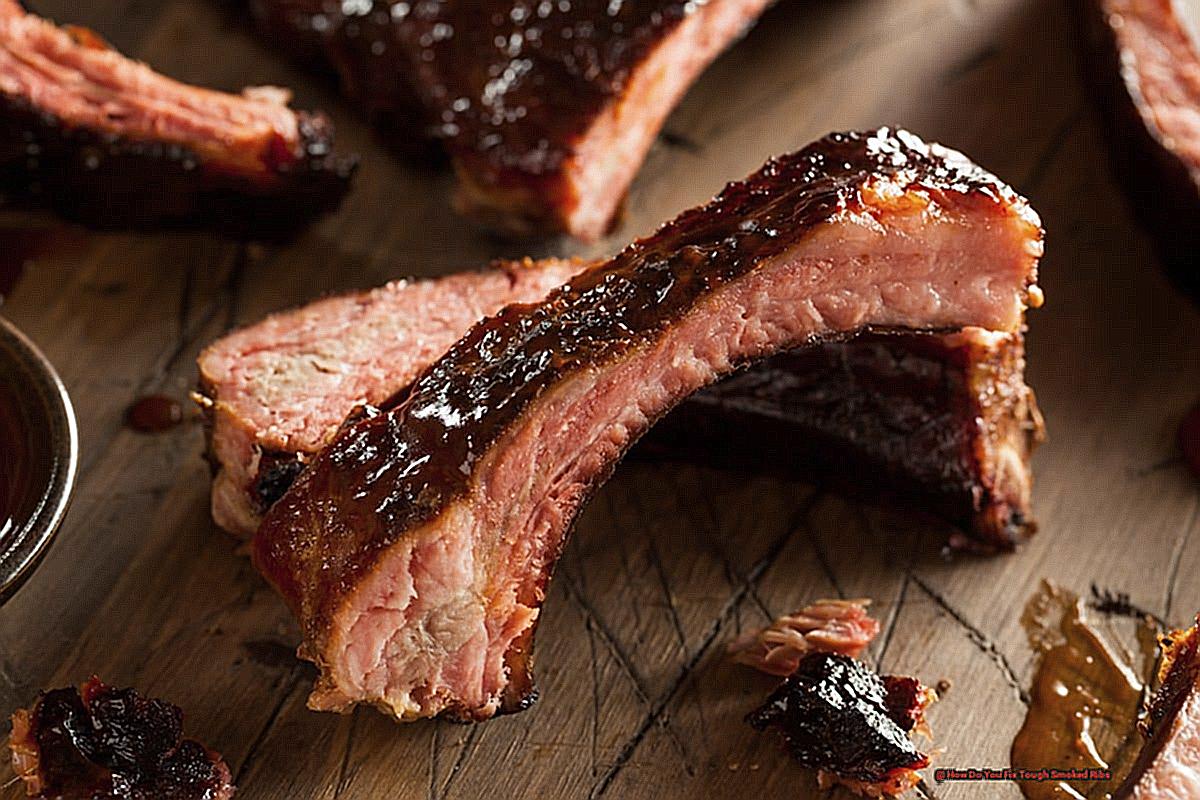
By following these solutions, tough and dry smoked ribs can be fixed, resulting in perfectly tender and succulent meat for your BBQ. Remember to track the internal temperature and use techniques such as wrapping, using a water pan, and spritzing to retain moisture and prevent dryness.
The Benefits of Wrapping Ribs During Cooking
Wrapping ribs during the cooking process offers a multitude of benefits that can elevate the tenderness and flavor of the final product. Some advantages include:
- Sealing in Moisture and Juices: By enveloping the ribs in foil or butcher paper, the rendered fat and juices are trapped inside, preventing the ribs from becoming dry. This results in a succulent and juicy end result.
- Quicker Cooking Time: Wrapping ribs accelerates the cooking process by trapping heat and moisture within the wrapper. This allows the temperature to rise quickly, resulting in a faster cooking time.
- Improved Tenderness: The trapped heat and moisture inside the wrapper also aids in breaking down the connective tissues in the meat, making it more tender and easier to chew.
- Personalized Flavors: Wrapping ribs allows for more control over the flavors infused into the meat. By adding spices, sauces, or liquid to the wrapper, you can create a variety of flavor profiles for your ribs.
- Versatility: Wrapping ribs is not limited to just one type of cooking method. You can use this technique for grilling, smoking, or even baking in the oven.
To further demonstrate the benefits of wrapping ribs during cooking, here is a comparison table between unwrapped and wrapped ribs:
| Unwrapped Ribs | Wrapped Ribs |
|---|---|
| Easily dries out and becomes tough | Retains moisture and becomes tender |
| Cooking time can be extended | Cooking time is significantly reduced |
| Connective tissues may not fully break down | Connective tissues are broken down for enhanced tenderness |
| Flavors may not penetrate deeply into the meat | Flavors are infused throughout the meat for a more pronounced taste |
| Limited to certain cooking methods | Can be used for various cooking methods |
Wrapping ribs during the cooking process presents a plethora of advantages that can greatly enhance the tenderness and flavor of the final product. By enveloping the ribs in foil or butcher paper, you can seal in moisture and juices, which prevents them from becoming dry and results in a succulent and juicy end result.
Additionally, wrapping ribs speeds up the cooking process by trapping heat and moisture inside the wrapper, which leads to a quicker cooking time. This technique also helps to break down connective tissues in the meat, resulting in improved tenderness and ease of chewing.
Furthermore, wrapping ribs allows for customizable flavors by adding spices, sauces, or liquid to the wrapper. This adds a variety of flavor profiles to your ribs, making them more versatile for different taste preferences.
Tips for Using a Water Pan to Keep Ribs Moist
When smoking ribs, using a water pan can make a significant difference in keeping them moist. The pan’s water creates both humidity and steam, which helps to cook the ribs evenly. This moisture also acts as a barrier, preventing the ribs from drying out during the cooking process. As the steam rises, it is absorbed back into the meat, resulting in incredibly juicy and tender ribs.
Not only does a water pan contribute to even cooking, but it also helps to regulate the smoker’s temperature. Consistent temperature is essential to avoid dry ribs. The water in the pan acts as a heat sink, absorbing and releasing heat as needed to maintain a steady temperature. This ensures that the ribs are cooked at an even temperature, which helps to retain moisture and prevent them from drying out.
In addition to regulating temperature, a water pan allows for indirect cooking of the ribs. By placing the ribs on a rack above the water pan, indirect heat can circulate around them, resulting in more even cooking. This indirect heat also prevents flare-ups and hot spots that can cause uneven cooking and result in dry spots on the ribs.
Overall, utilizing a water pan when smoking ribs is a highly effective method for keeping them moist and preventing them from drying out. It creates humidity and steam, regulates temperature, and allows for indirect cooking, all of which contribute to juicy and tender ribs. So next time you fire up your smoker, don’t forget to add a water pan for perfectly moist and delicious ribs.
Furthermore, adding a personal anecdote, I remember one time when I was using my smoker without a water pan, my ribs turned out dry and tough despite following all the proper techniques. It wasn’t until I started using a water pan that I noticed a significant improvement in the tenderness and juiciness of my ribs.
In conclusion, incorporating a water pan into your smoking method is crucial for achieving perfectly moist and delicious ribs. Not only does it help with even cooking and temperature regulation, but it also adds a unique element of flavor and tenderness to the meat.
The Art of Spritzing: Adding Moisture and Flavor to Ribs
Spritzing is a crucial technique in the world of BBQ, used to impart moisture and flavor to ribs during the smoking process. This technique involves regularly coating the ribs with a liquid mixture made of water, vinegar, and spices. The effects of spritzing are particularly valuable when it comes to keeping the ribs moist and preventing them from drying out during the lengthy cooking process.
Spritzing works to add moisture to ribs in two ways. First and foremost, the liquid in the spritz helps replenish any moisture lost due to the heat of the smoker. This is essential because as meat cooks, it releases moisture, which can lead to tough and dry ribs. By consistently spritzing the ribs, you are replacing this lost moisture and preserving the tenderness and juiciness of the meat.
Furthermore, spritzing creates a barrier between the meat and the heat of the smoker. As mentioned earlier, this cool liquid meeting hot meat creates a protective layer that prevents the ribs from burning or becoming dry. This results in a more uniform cooking process and helps retain moisture within the ribs.
In addition to adding moisture, spritzing also serves to enhance the flavor of ribs. By using a mixture of water, vinegar, and spices, you are infusing the ribs with additional flavors while they cook. This can lead to a more complex and delectable taste in your ribs.
To successfully utilize spritzing, it is crucial to select an appropriate liquid mixture and regularly spray or baste the ribs throughout the cooking process. Here is a simple recipe for a basic spritz mixture:
| Ingredient | Amount |
| Water | 1 cup |
| Vinegar | 1/2 cup |
| Worcestershire sauce | 1/4 cup |
| BBQ rub or spices of choice | 1 tablespoon |
Combine all ingredients in a spray bottle and shake well before use. Spritz ribs every 30 minutes during the cooking process, making sure to cover all sides of the ribs.
In a nutshell, spritzing is an essential technique in the art of smoking ribs. It adds moisture and flavor to the meat, resulting in tender, succulent, and mouth-watering ribs.
Achieving Fall-Off-The-Bone Tenderness in Smoked Ribs
Achieving fall-off-the-bone tenderness in smoked ribs demands a combination of time, patience, and the right techniques. Don’t worry, though – with these tips, you’ll be able to achieve perfectly tender and delicious smoked ribs with ease.
Firstly, it’s important to preheat your grill to the correct temperature. This ensures even cooking and tenderness, so make sure your grill is set to 225 degrees Fahrenheit.
Next, try using the 3-2-1 method. This involves smoking the ribs at a specific temperature for 3 hours, wrapping them in liquid for 2 hours, and saucing them for the final hour. Not only does this technique create a tender and flavorful result, but it also adds an element of excitement to the cooking process.
Another crucial step is to regularly spritz your ribs. This keeps them moist and adds flavor throughout the cooking process. For optimal results, use a mixture of apple juice, vinegar, and spices to spritz every half-hour while smoking.
After the initial smoking period, it’s time to wrap your ribs. You can do this by tightly wrapping them in foil or placing them in a disposable foil pan with a liquid mixture (such as apple juice or vinegar). This helps to steam and further tenderize the meat.
Once your ribs are fully cooked, let them rest for at least 10 minutes before serving. This allows the juices to redistribute and results in even more tender meat. Don’t be afraid to use a meat thermometer to check the internal temperature – aim for 195-205 degrees Fahrenheit for that perfect fall-off-the-bone tenderness.
Lastly, don’t be afraid to experiment with different wood flavors. Different types of wood can add unique flavors to your ribs, so have fun trying out different combinations or sticking with your personal favorite.
Conclusion
In conclusion, don’t let tough smoked ribs ruin your BBQ experience. Say goodbye to lackluster barbeque and hello to mouthwatering, fall-off-the-bone ribs that will have your friends and family begging for more. With the tips and techniques outlined in this article, you can easily fix any issues and achieve perfectly tender and flavorful ribs every time.
From selecting the right cut of meat to mastering the art of smoking, we’ve got you covered. Remember to properly cook your ribs to avoid health hazards, use a thermometer for accurate doneness, wrap them for added moisture and tenderness, and experiment with different flavors and cooking methods. By following these guidelines, you’ll be on your way to becoming a pitmaster in no time.
But why settle for just good when you can aim for greatness? Elevate your BBQ game by incorporating unique flavors and techniques into your smoked rib recipes. Experiment with unexpected ingredients like coffee or maple syrup for a delicious twist on traditional BBQ flavors.
And let’s not forget about presentation. Impress your guests not only with the taste of your ribs but also with their appearance. Master the perfect smoke ring or try out different garnishes to add that extra wow factor.

